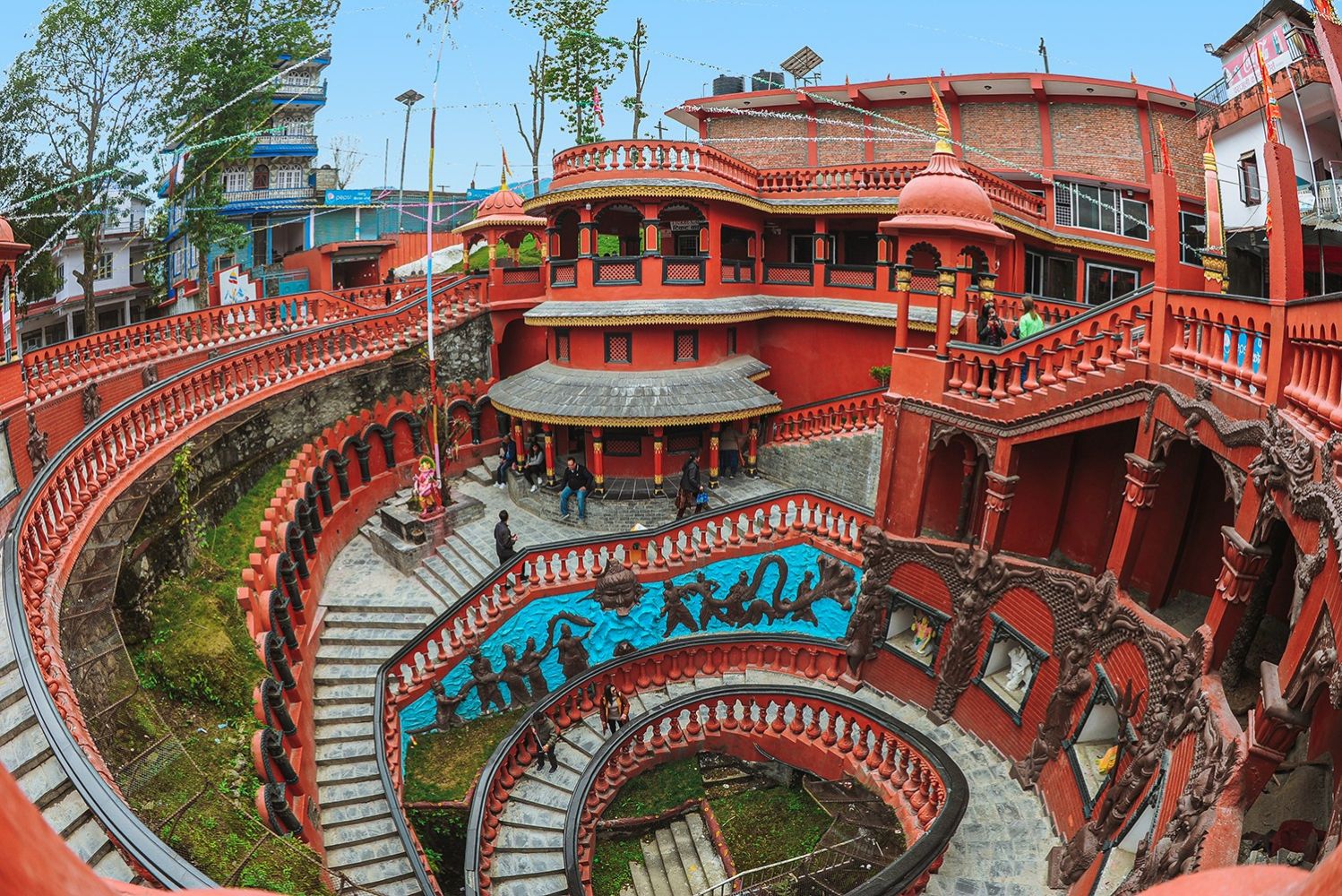
SATV 10 June, Kathmandu: The historic Gandaki Shatta Kundiya Gayatri Kotihom has boosted tourism in Pokhara. Devotees from both Nepal and India who attended the Kotihom also visited various religious and tourist sites in Pokhara, driving an increase in both domestic and international tourist numbers.
Laxman Bastola, Chairperson of the Gupteshwor Cave Management Committee, said the number of visitors to the Gupteshwor Mahadev Cave in Chhorepatan—near the Sadashiv Siddheshwar Harihar Temple at Birauta, Pokhara Metropolitan City-17—rose by about 10 percent compared to previous years. Manav Sewa Foundation launched the Kotihom program on the temple's guthi (trust) land starting April 29, 2025.
He reported that from March 30 to June 9, 2025, 93,716 tourists visited the temple, while during the same period this fiscal year, 101,144 people bought tickets to visit the cave
Chairperson Bastola said most devotees who attend the Kotihom from outside Pokhara also visit the Mahadev shrine inside the cave and enjoy the scenic view of the famous Patale Chhango (Devi's Falls), which has increased tourist numbers.
He reported that 7,428 more people visited the cave during this period compared to the same time last year. "The Kotihom event has directly contributed to the rise in tourist numbers at the cave," he said. "We've also seen a noticeable increase in interest from Indian tourists during this time."
Visitors descend past dripping water from about 100 meters of rock surface before reaching the Mahadev shrine inside the cave. After walking approximately 100 meters from the idol of Lord Shiva on the right, they arrive at an open space within the cave.
Chairperson Bastola said the natural rock formations inside the cave resemble various deities and that tourists find the view of Patale Chhango (Devi's Falls), visible directly from beneath the natural bridge on the Siddhartha Highway, particularly captivating. He noted that the reflection of the waterfall in the pond below enhances the area's scenic beauty. According to him, the Kotihom event has actively promoted the cave and significantly boosted tourism.
He added that many devotees repeatedly visit the cave, believing that worshiping the Mahadev shrine inside fulfills their wishes. He recalled that officials discovered the cave in 2050 BS (1993 AD) and that its promotion has increased since then.
Tourism entrepreneurs acknowledged that Kotihom has played a key role in promoting Pokhara's tourism by drawing visitors not only to Gupteshwor Cave and Patale Chhango but also to other religious and tourist sites such as Tal Barahi, Bindhyabasini Temple, the Shiva statue at Pumdikot, Phewa Lake, Sarangkot, and the World Peace Stupa.
Balayogeshwar Vijayashree Krishnamurti Maharaj, Chairperson of Manav Sewa Foundation Nepal and the initiator of the Mahayagya, said the foundation aims to present Pokhara to the world as the “Gateway to Muktinath,” a renowned pilgrimage site. He added that they seek to highlight the global significance of all scripturally described religious and spiritual sites, temples, and shrines across Gandaki Province.
He emphasized that through Kotihom, the foundation works to elevate the region's religious, cultural, and historical value at both national and international levels. He said the event helps revive Vedic knowledge and spiritual traditions in modern society while also illuminating their scientific, social, and spiritual relevance.
Organizers constructed 100 ritual ponds (kundas) across nearly 80 ropanis of land, including 29 ropanis and 12 annas belonging to the temple. Mahayagya initiator Maharaj said the Kotihom ritual, which began on April 29, concluded today. During the grand fire ritual, 300 individuals—including Acharyas and Brahmins—prepared charu (a sacred mixture) using barley, sesame, rice, ghee, and other offerings.
Kotihom Co-incharge Yuwak Lamichhane reported that hundreds of thousands of devotees participated over the one and a half month duration and that the event raised more than Rs 100 million.
Bhagavat Manjari Radhika Dasi and Krishnamurti honored
The Sadashiva Siddheshwar Harihar Temple Management Committee honored Bhagavat Manjari Radhika Dasi and Maharaj, Chairperson of the Manav Sewa Foundation and initiator of the Mahayagya, for their roles as the lead speaker and spiritual guide during the Kotihom at Birauta, Pokhara-17.
The committee, which provided its trust-owned land for the event, credited them for helping revive the ancient temple's heritage. Chairperson Nagendra Sharma Bhandari presented them with certificates of honor during a formal program held on the temple premises.
On the occasion, three priests performed a maha aarti in rhythm with devotional music. The main kund, built within the temple grounds, served as the sacred site for the precisely conducted havan (fire ritual). Chairperson Sharma said that the original lal mohar (royal seal) from 1864 BS, which established the temple's royal trust for worship management, remains preserved to this day.



















